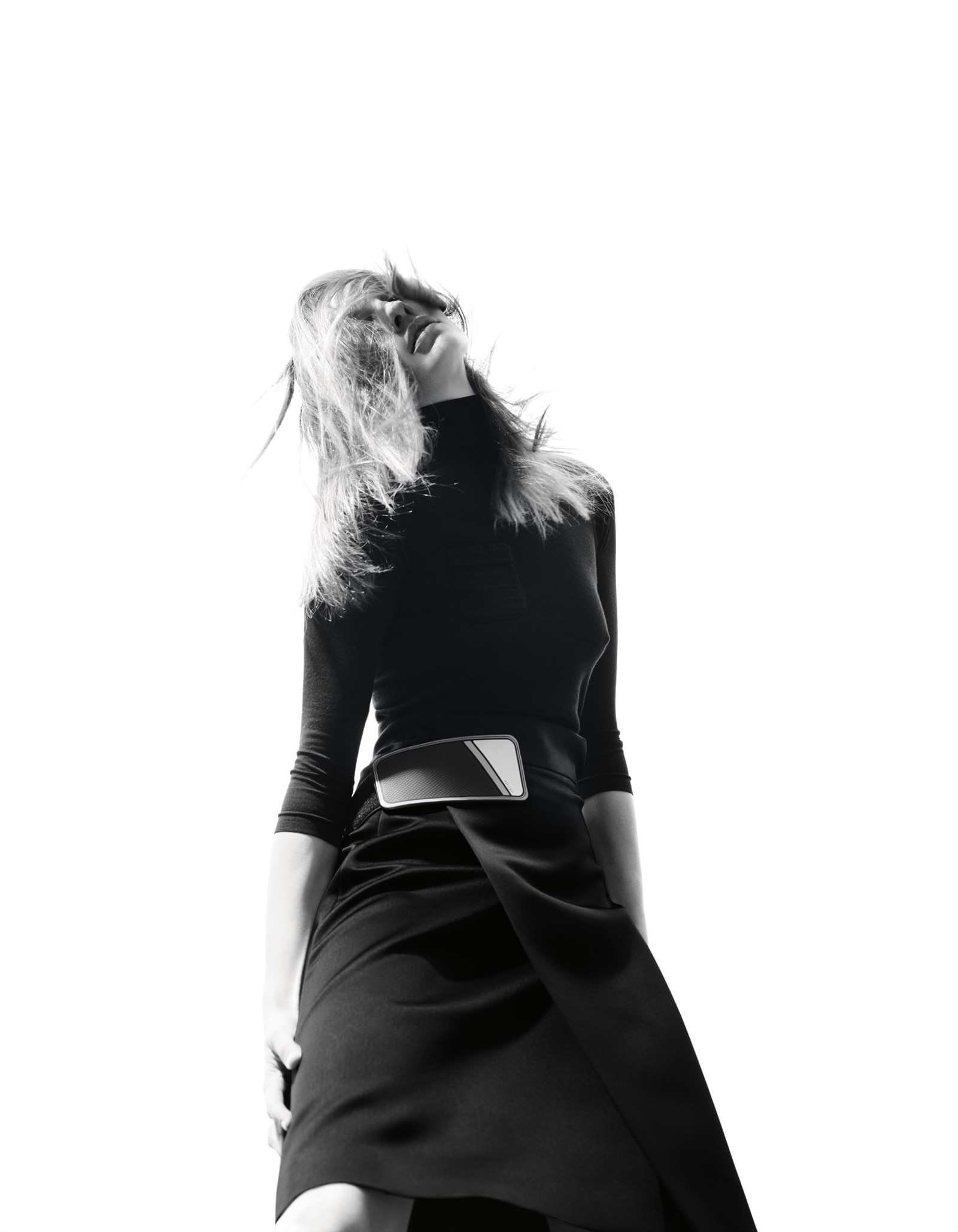It is early November and silver mist has descended over Milan but the Fondazione Prada – a spirit-lifting, almost metaphysical place – is all the more romantic and beautiful for it. Juxtaposing a sense of Modernism, the raw power of the unfinished and industrial shades of grey with the opulence of its 24-carat-gold leaf covered “haunted house” and the wilfully bizarre Wes Anderson designed Italianate café, Bar Luce, the foundation is as visually arresting and unlike anything else of its kind as the collection of art it contains, the exhibitions staged within its walls and, of course, the fashion that bears the Prada name.
Co-chaired since 1993 by Miuccia Prada and her husband and Prada CEO Patrizio Bertelli, the foundation found a permanent home in Milan, created by Rem Koolhaas and OMA, which opened to the public in 2015. A smaller but still appropriately grand exhibition space is located in a 17th century palazzo in Venice. The Milan base was originally a distillery dating back to the early 20th century and combines seven existing buildings and three new structures. They could so easily jar but are, conversely, aesthetically pleasing and harmonious to the point where one could be forgiven for never wanting to leave: a meeting of the timeless and the innovative, again this is quintessential Prada.
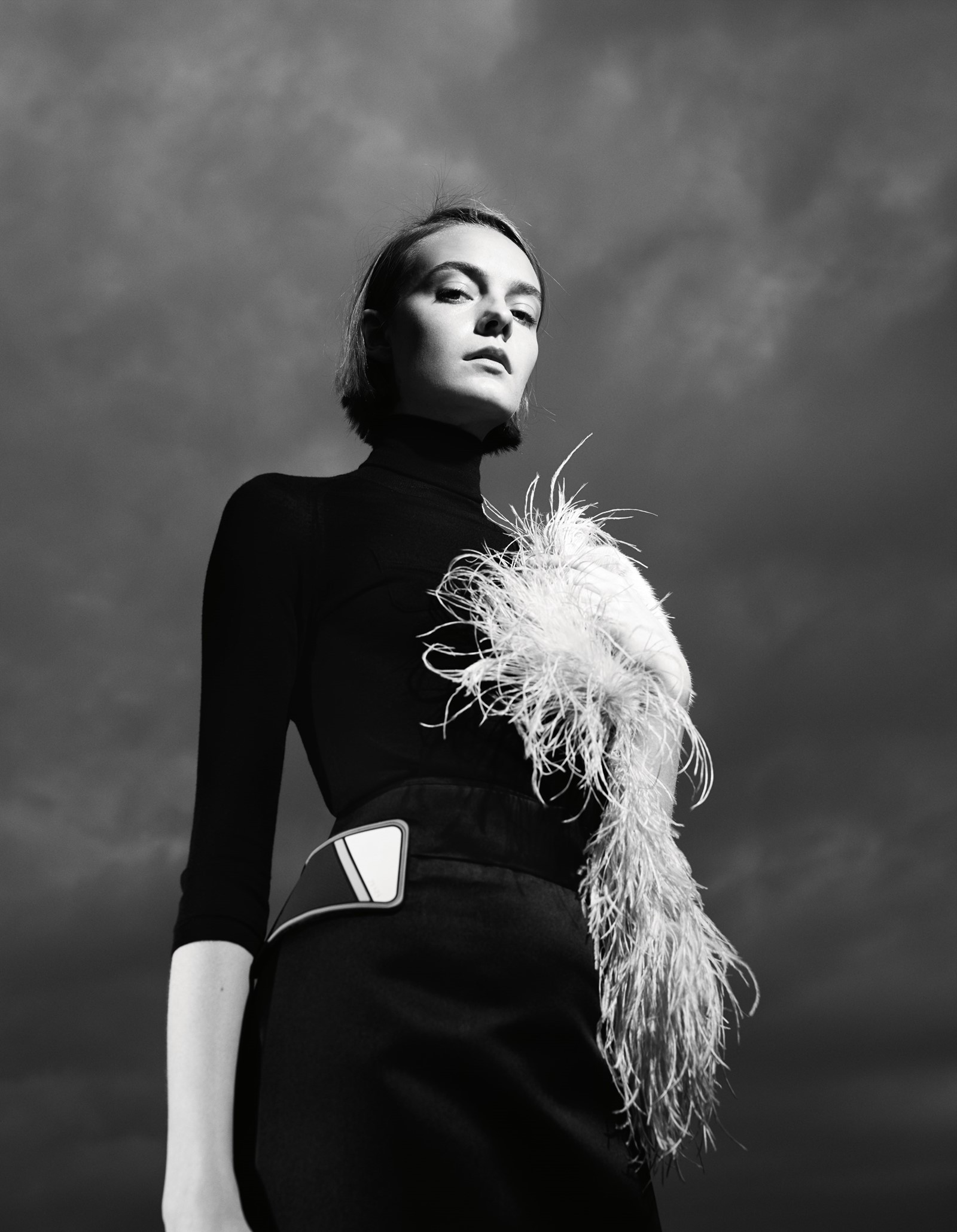

Today the main gallery is occupied by the largest retrospective to date of William N Copley, spanning his output from 1948 to 1995, as well as pieces once owned by him by greats including Max Ernst, René Magritte and Man Ray. Alongside that is Edward Kienholz’s Five Car Stud – a profoundly disturbing installation from Prada’s private collection – and other only marginally less unsettling pieces realised by the artist and his wife Nancy Reddin Kienholz between 1959 and 1994, the year he died. Finally there’s a site-specific series courtesy of Tobias Putrih that is as light-hearted as its companion shows are political and provocative.
“When it comes to ideas and solutions about art display, Miuccia is definitely one of the most experimental people I have ever met,” says Germano Celant, director of the Fondazione Prada. “She never settles for the latest exhibition trend but always aims to achieve more extreme results. Her interest and passion for everything visual leads her to radical solutions.”
The Copley show is bright, bold and infused with wit and optimism. It’s mischievous, for sure. There’s a series of monolithic flags that poke fun at the national pride of each of the countries they represent: the British flag has a large black umbrella painted across its centre, the stars and stripes of the American flag are broken up by a scantily clad pin-up seen from behind. Copley, who was adopted by his media mogul father Ira Copley in 1921, believed his birth mother was a prostitute and uproariously bawdy nudes referring to that profession and displaying equal amounts of barefaced cheek (literally) and affection appear throughout.
Kienholz’s work is darker. It looks unflinchingly at issues of racism, child abuse and religion though is still strangely – even confusingly – lovely in places. Putrih, meanwhile, a less established name, invites visitors to interact with and manipulate his artistic environments, to move bricks around from place to place, to shift transparent screens and create a bespoke labyrinth, and to put their hands into rubber holes in the wall and feel the shapes contained therein without seeing them: imagine a kind of I’m a Celebrity Get Me Out Of Here Bushtucker Trial of the art world, though with no bush tucker involved, mercifully. Whatever, it is as democratic as it is ultimately joyful.
“Art, culture, intelligence and ideas should make life more interesting, more beautiful, more fun, they should be a pleasure, not a duty, they should be something that makes you more happy” Miuccia Prada
The three artists couldn’t be more disparate. What links them, however, is their personal relevance to the woman who is choosing to showcase their work. Miuccia Prada has an extraordinary team of creatives around her everywhere from in her design studio to the young and inspired curators here, but it is her own sensibilities and interest in humanity – taking in the emancipation of women, issues of politics and class and the difficulties of a seemingly ever more hostile world – that are reflected in any content. An ability to shift effortlessly between the apparently light and the extremely serious is central to her handwriting.
Sitting in her offices a ten-minute drive from the foundation, Prada contemplates the reactions to the Copley and Kienholz shows. “What’s strange is that we thought so many of the subjects Kienholz touched upon were likely to cause offence,” she says. “But people were more scandalised by naked women and pornography. You know, porn is everywhere but officially sex doesn’t exist.” She’s smiling.
More broadly: “People like the place [the foundation], instinctively and naturally. There is a lightness. Art, culture, intelligence and ideas should make life more interesting, more beautiful, more fun, they should be a pleasure, not a duty, they should be something that makes you more happy. I was educated through literature, theatre and cinema. Art came very late. I realised, though, that in the end if you know about theatre, literature and movies, the thematics are the same. And so I studied. Me and my husband, we really studied. A friend said, why don’t you do a place, a foundation. We began meeting artists, it was a big education and it lasted 20 years.”
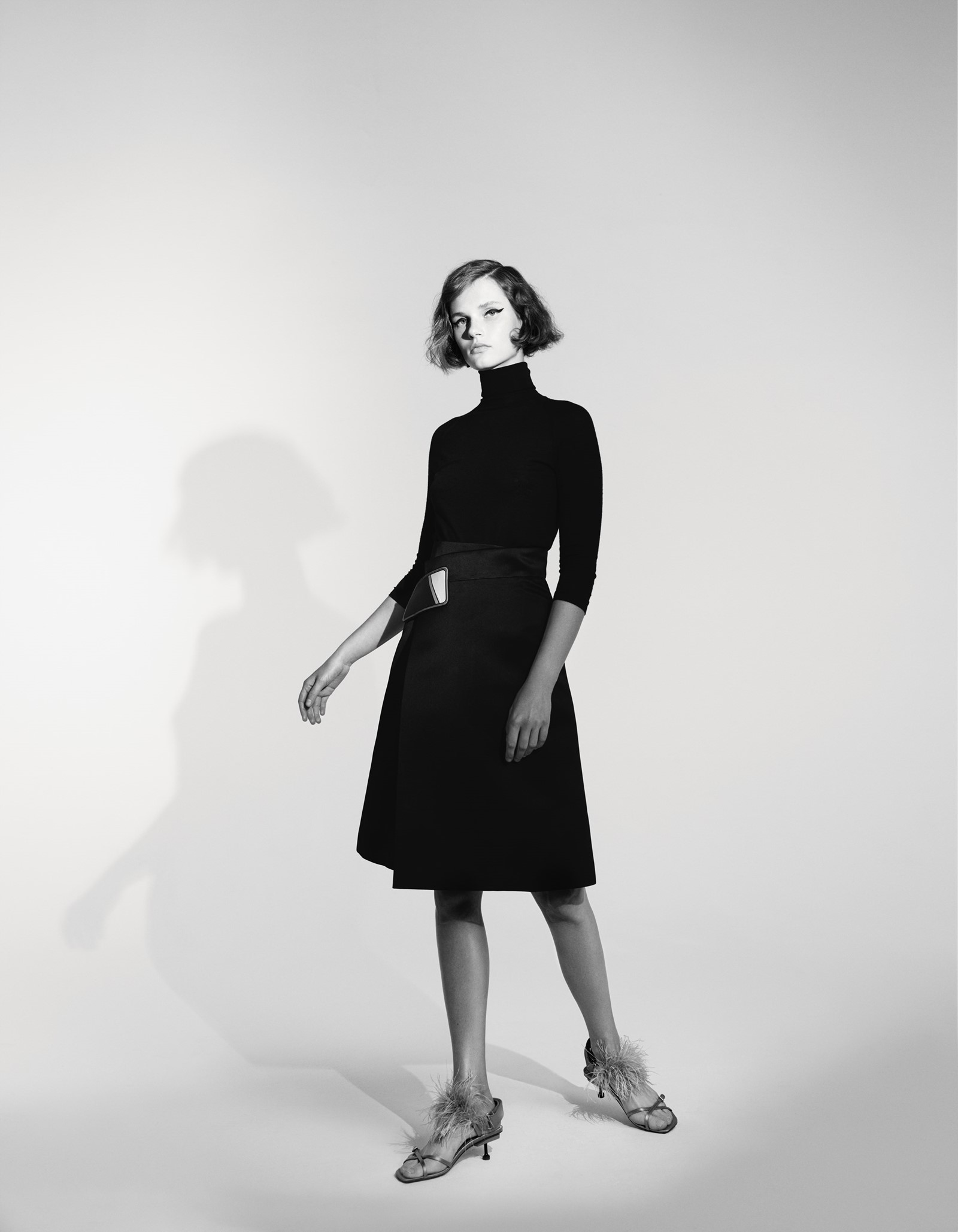
She is dressed in a fine-gauge V-neck cashmere sweater over a plain white T-shirt and a pleated, knee-length skirt. On first impression the look couldn’t be more classically grounded and understated. Upon closer inspection, however, the skirt is sprouting palest pink ostrich feathers down one side. Equally idiosyncratic, on Prada’s feet are fluffy turquoise blue slippers finished with oversized pearls that she would doubtless be the first to describe as kitsch – or maybe trashy which is a word she has used often. Not even remotely trashy meanwhile is a pair of vintage earrings – other than the plastic bananas she wore to present the Turner Prize in 2010, Miuccia Prada’s jewellery is always vintage – with oversized teardrop stones in a very similar though less one-dimensional shade. These amply demonstrate the relationship between the humble and the haute that the designer continues to explore. The precious pieces light up her animated and elegant features as she talks.
It has become almost clichéd to describe what Prada wears but her personal sense of style – fairly or unfairly – has always been part of, or even central to, any analysis of her character and sometimes from the most unlikely sources. Here’s Max Sirena, former skipper of Luna Rossa, the Prada sponsored yacht, who since November last year has been with the Board of Emirates Team New Zealand but who worked with Prada and Bertelli for over two decades. “The world of Prada is something you don’t easily find in other environments: business, art or life,” he says. “I feel privileged to have been part of that. I still remember when I first stepped into the Prada offices, the slide and the perfection of every detail. It sounds strange but even now, after more than 20 years, everyone says Mrs Prada dresses similarly all the time, which is somehow true, but in reality she is always dressed in a different way. That game also attracts your attention.”
“Miuccia is a curious, thoughtful, true to-herself experimentalist. The possibilities she offers through Fondazione Prada are hugely exciting” Carsten Höller
Any mention of the famous slide is inevitably also part of the discussion, not least because its owner has been known to push unsuspecting visitors down it, not tolerating any last-minute nerves. It was, of course, designed by Carsten Höller.
“Prada is about tradition and innovation going hand-in-hand without really covering the middle ground,” this artist says. “Miuccia is a curious, thoughtful, true to-herself experimentalist. The possibilities she offers through Fondazione Prada are hugely exciting. Who else would say: ‘Yes, let’s do it’ when you propose a bar, restaurant and nightclub which is half Congolese and half Western as I did? We opened The Double Club in London one year later.”
Even by her own elevated standards – and Prada’s standards, her wish to push fashion forward while expressing rather more universal concepts are second to none – last year was one of grand thinking and equally grand designs. In February she showed a womenswear collection she described as an exploration of “the history of women”. An at once monumental and tender study of matriarchy, Prada’s “vagabonds”, as she described them, were as much a comment on migration as they were the many roles the so-called fairer sex are called upon to play.
“Women have more facets. We are so much more complex. We are lovers, mothers, workers. We have to be beautiful,” Prada said at the time. She had begun her hugely emotive – and just huge – exploration of the past a month earlier for her menswear show (the two often relate to one another). That time also she collaborated with the artist Christophe Chemin whose prints worked hard for her. For womenswear they were based on the French Republican calendar, designed to negate religious and royalist connotations, and based on weather patterns, all feminine, neatly enough. Germinal, Floreal, Messidor, Thermidor, Fructidor. The words appeared writ large across heavy satins and along with ripened fruit and what looked like an archetypal Madonna from an Old Master painting. The richest gold brocades cut into exaggerated volumes were juxtaposed with white denim (high and low again), laced corsetry with dry military wools (feminine and masculine) and shoes were made for walking (heavy army boots). As for the soundtrack, it ran the gamut of PJ Harvey, Björk, Nico and Edith Piaf. “I find Edith Piaf so beautiful – heartbreaking,” Prada said.
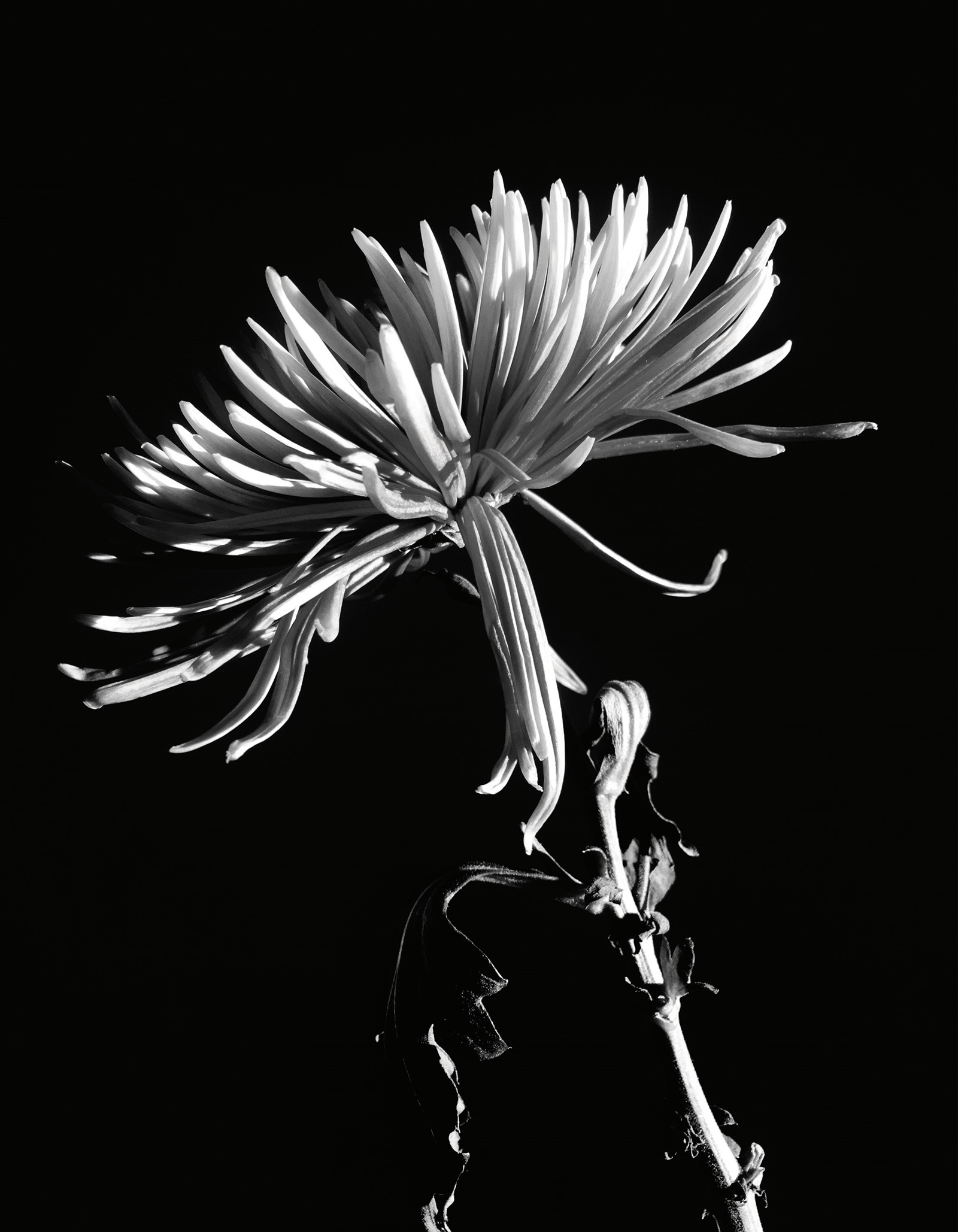
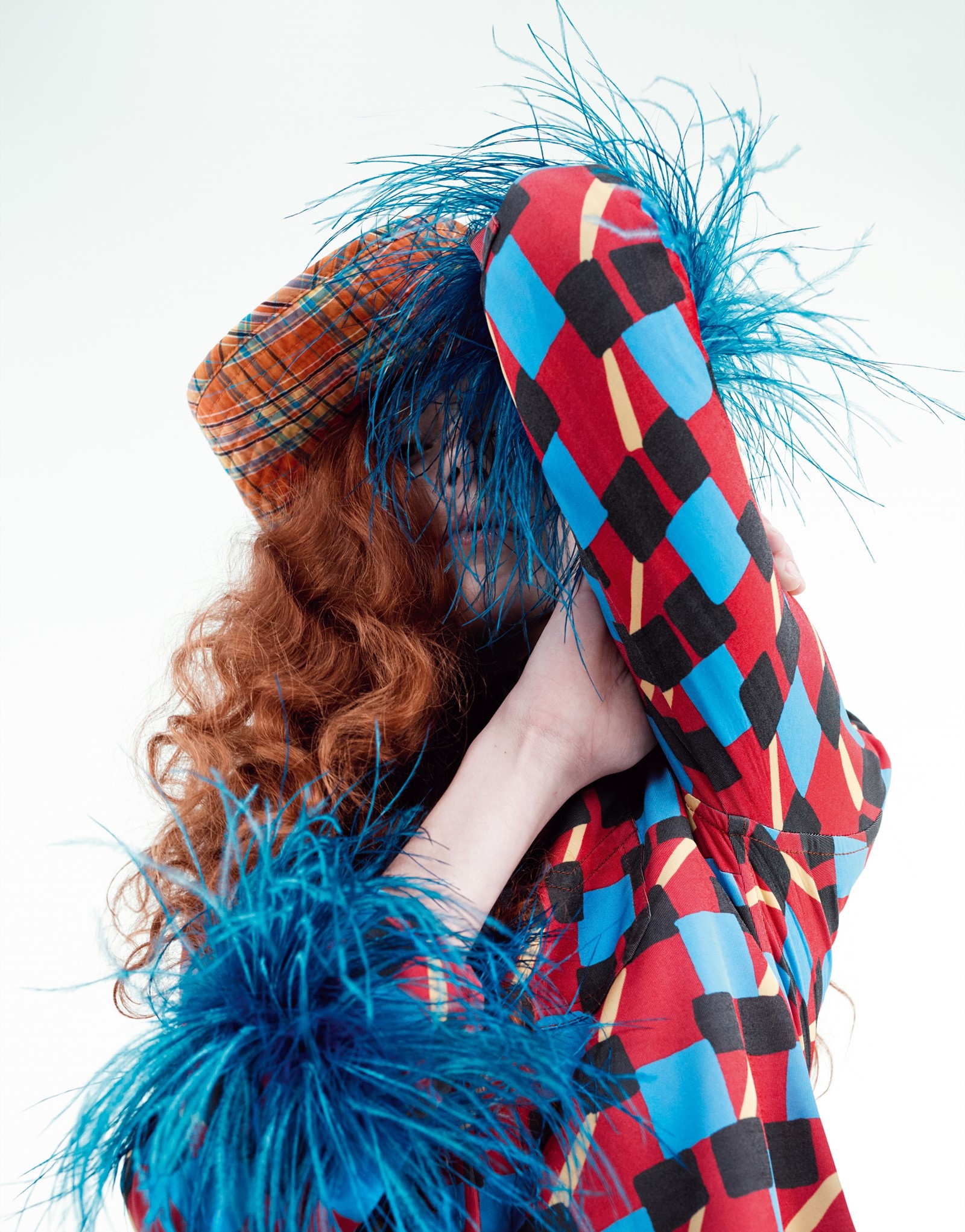
“What’s very interesting when I work with her is that there are always a lot of questions, it’s never clear with music,” says Frédéric Sanchez, who has collaborated with Prada on sound design since the 1990s. “But that’s incredible. It’s always the idea of not being too obvious but being universal at the same time.”
“Almost everything starts with a discussion about the ideas that are compelling to her,” is how graphic designer Michael Rock puts it. Rock first worked with Prada in 1999 on a retail/digital concept with OMA, but perhaps most intensely on Pradasphere, a brilliant 2014 exhibition of the Prada archive and accompanying catalogue of which he was co-curator and author. “We try to overlay that with issues that are important to us. The collision between those two directions often result in surprising contradictions and juxtapositions. Miuccia is a master of combination, of bringing two divergent things – ideas, genres, patterns, colours, textures, prints, images – together in completely unexpected ways. Juxtaposition is at the heart of collaboration too, which is why she is such a great collaborator. She brings people together and directs the creative frisson. In the end the process is highly negotiated, like a long, intense conversation using physical things to make points.”
“At the moment we need fashion that is intimate, real, more sensitive somehow. We were thinking of love, of fear” Miuccia Prada
Six months later and, as is so often the case, Miuccia Prada’s current collection represents a radical about turn. Backstage following the Prada womenswear Spring/Summer 2017 show in Milan in September, she said this to journalists who hang on her every word (the scrum around the designer is unprecedented): “I was trying to find a new sort of elegance. Elegance sounds like such an old fashioned word, but there’s also the sense of something meaningful, deep, cultivated.” In favour of history, Prada was now reflecting on the present, she argued: a film projected on to screens above a raised pewter runway directed by a new Prada collaborator, the filmmaker David O Russell, was entitled Past Forward. “At the moment we need fashion that is intimate, real, more sensitive somehow,” Prada continued. “We were thinking of love, of fear. But I tried to make it in a way that is contemporary, to make it relevant for today.”
“To me Prada means timelessness, classic but always new, different, strange, special and beautiful,” David O Russell says. “Miuccia Prada’s simultaneous fierceness and humility is very special. She is someone who is comfortable with the uncomfortable which is where life and creativity often live, on that edge of beauty, time and the unknown. She is sincere, honest and no-nonsense. She somehow reminds me of my Italian peasant ancestry plus sophisticated royalty, both at the same time, which I realise is a contradiction but that’s who she is – no bullshit.”
“I have to say that I personally am lucky. I work in a civilised company. I was young during the feminist revolution so I never really had a problem. But that doesn’t mean that problems don’t exist” Miuccia Prada
“I have a passion for cinema,” Prada says now of this particular partnership. “It’s a form of art but it’s a form of art that people find very touching. We cry at movies. So I wanted to work with David O Russell. He respects me and I respect him. He was interested in the possibility of doing something completely free of duty. He didn’t have to sell the movie. It was a moment of freedom of expression.
“People are more and more preoccupied by history,” she continues. “You see it in every field. We need consideration of our past because of what we have to face so it’s a very natural thing. This past 20 years, since the 90s, I think, or even the 80s, in every field people have become obsessed with the past. Obsessed? Probably curious is a better way of putting it, wanting to learn. I never really studied history because I find it hard to retain names and dates though I tried many times. I am more interested in the concept though and so the concept stays. So, as a concept, this past year was for me about people in general, the fatigue, the effort, the difficulties of their lives, what they have to go through. Or what we carry on our shoulders as women and how difficult, more difficult than for men I think, our life is. I have to say that I personally am lucky. I work in a civilised company. I was young during the feminist revolution so I never really had a problem. But that doesn’t mean that problems don’t exist. I was in a very privileged position… Anyway, I could have gone on forever. But I decided to stop. Basta.”
For her new main line collection, then, Prada decided: “Let’s think about now. It’s a mix of considering what really makes sense to a woman in terms of fashion at the moment, what’s right and nice to wear: the modest side, not the big drama. More introverted, more simple. When I work on fashion, I like the pleasure of just doing fashion, thinking about my job. So, as a woman, how do you want to dress next? That always draws me. The pleasure of clothes.”
It is typical of the extreme contrasts – and even contradictions – that lie at the heart of everything that Prada touches and indeed often also colour what she says that the “now”, in this instance, translates to no small extent to references to her own fashion history. Similarly, very little of the collection or indeed the way it was shown was in the end entirely simple – at least not in the sense in which that word is generally understood.
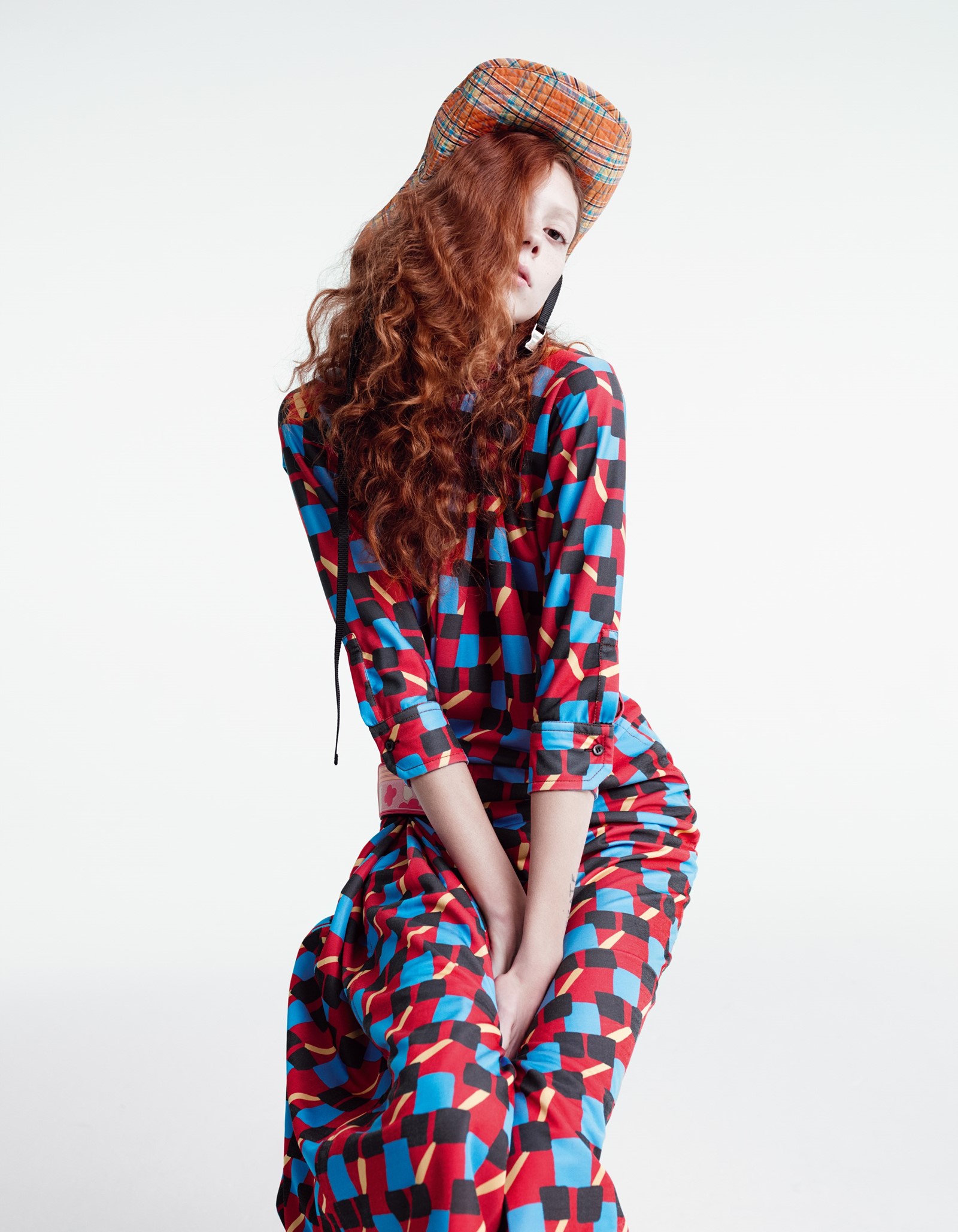
Take, for example, the first look out. A black cropped polyester vest and knee-length split skirt, it clearly harked back to Prada in the mid-90s when the buzzword was minimal, though Prada herself never thought of it quite in that way. Then came the hybrid diner/Art Deco prints that have made an appearance on more than one occasion and the references to military dress in patch-pocketed jackets in the strange colour combinations that the designer loves to play with and which shouldn’t work but always somehow do. And there were bra tops worn over buttoned-up masculine shirts and the briefest shorts imaginable: all have also appeared on this runway in past seasons too.
“Yes, panties, I love,” Miuccia Prada confirms, and in this she is definitive. “Because they’re childlike. They can also look very paysanne. And of course they’re about sex also. I don’t say sex is not important. It’s very important. But it’s not the only thing. I have this discussion: why people like fashion. Even some very clever women say it’s because they want to seduce, but I don’t think we always dress because we want to seduce. When I want to seduce somebody, I know that I’m dressing to seduce that person. That’s for sure. But often it’s the last thing I’m thinking about. I’m dressing because I have to dress – in uniform.” The idea of uniform – from school to naval and army – is something Prada has long been preoccupied with. She pauses for thought. “I talked about that in an interview recently,” she says. “I don’t want to repeat myself.”
As for simplicity, it is true that there is a sense of both the clean and the contemporary throughout this collection but that is just what it is, an idea. The reality is that skirts, jackets and cardigans are fastened deliberately askew, checked cotton shirts have ribknit cuffs in brown (Prada loves brown having always upheld its virtues as “the least commercial of all the colours”), belts in pop bright shades are worn over coats and sweaters and the aforementioned ostrich feathers sprout everywhere from necklines to the split edges of skirts and sandals: sturdy, flat, rubbery, flowery, feathery sandals. The marriage of function and frivolity in the latter in particular neatly nail the prevailing mood.
Prada is especially pleased with the feathers it seems. “Feathers on a pleated skirt, it’s so stupid,” she says deadpan. “When I do something very strange but it looks super normal then I’m so happy,” she continues. “For sure I like opposites in general and to make opposites work is probably the basis of my taste. I use it all the time. So it’s red and it’s also black. I’m always searching. And once I get something I’m already in the next moment. I never enjoy anything for long. Possibly that’s anxiety, or maybe curiosity. And that gets worse and worse. I remember when I was younger, at least for a winter, say, I dressed in a certain way and that was that. Now I dress in a way that experiments with the next idea. With the feathers, though, I’m really enjoying it. And I have been for 15 days.” All hail Miuccia Prada’s restless spirit: it makes her the ultimate 21st century designer after all, widely perceived as the most influential of her profession.
It almost goes without saying that this designer, like all others, relies on a team. The people who work with Miuccia Prada tend to stay, and she continues to push them to places they might otherwise not think of going. Of all of those who enjoy that position, Fabio Zambernardi, design director at Prada since 2002, is the person she communicates creatively with most intensely. “We really do have the same sensibility,” she says of that relationship. “We work very well together, very closely.”
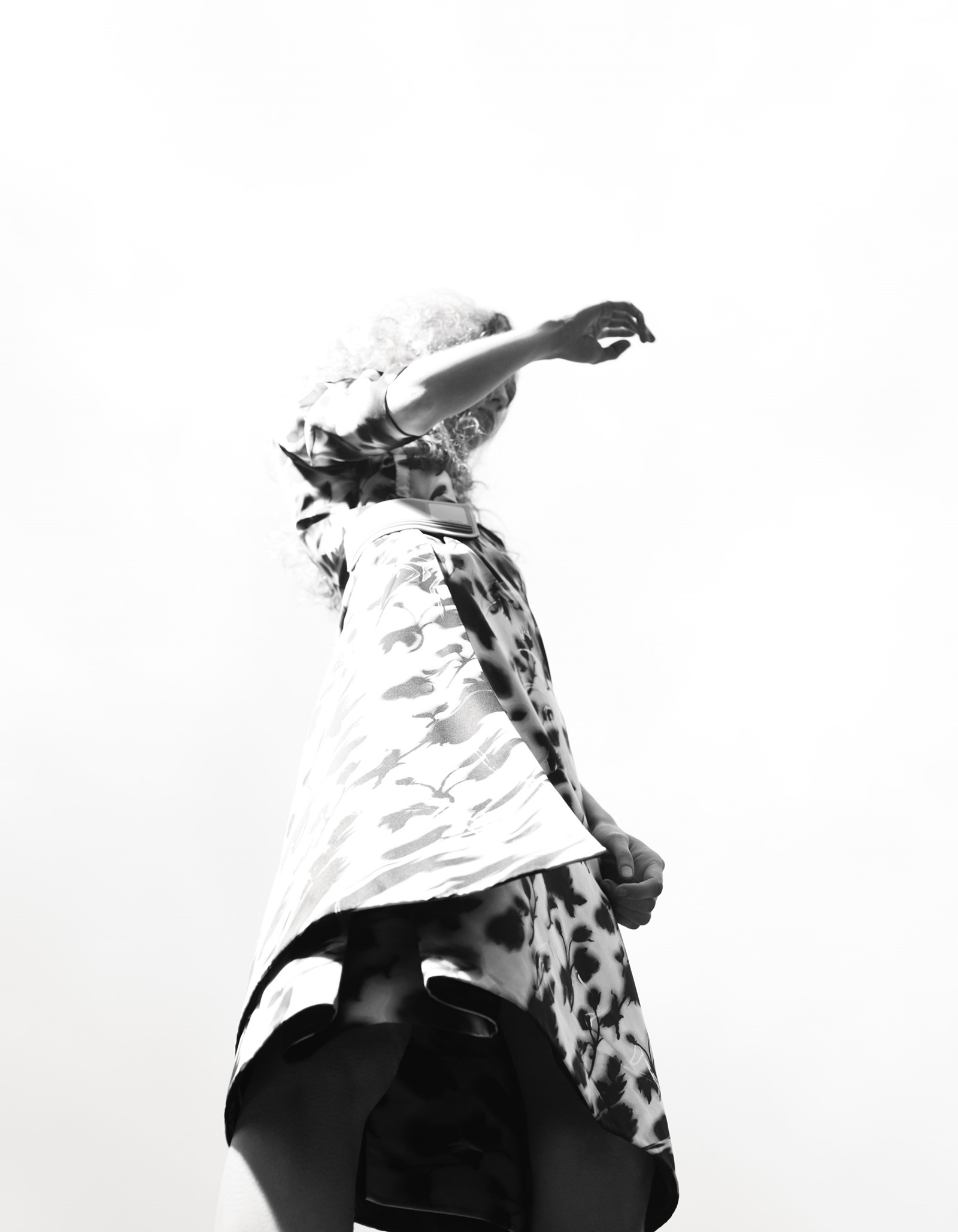
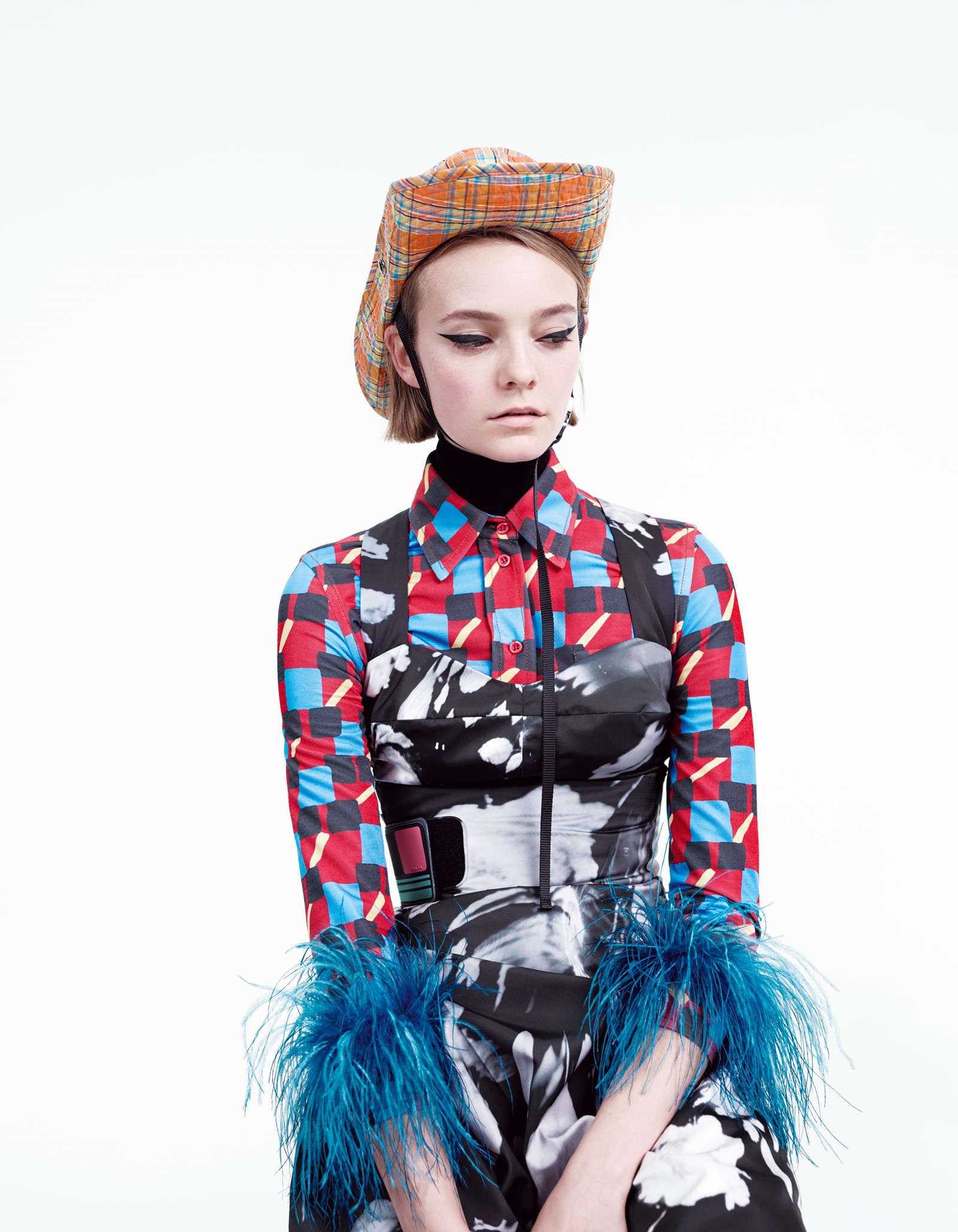
“She always says she likes to work with me because I’m hard on her,” Zambernardi laughs, talking from his office in Milan only hours before he flies off to LA to oversee the current Prada advertising campaign. “But I’m not hard. I’m honest. I’m like, come on Miuccia, we can’t mess around with this, it’s a bad idea. And she does the same. She’s never afraid of saying to people, especially to me, this is really horrible. Or this is fantastic. It’s because we trust each other.”
Zambernardi arrived at the company at the end of the 80s, only a year after Prada ready-to-wear was launched, having worked as a trainee in cooking and hospitality and, more suprising still, as an assistant in a dental laboratory. “Yes, I bumped into fashion in a very random way,” he confirms. Later he spent two years assisting a consultant on shoes and bags, one of whose clients just happened to be Prada. “Quite soon after that, Mr Bertelli and Mrs Prada asked me to work with them.” He started with shoes, which were as, if not more, important than any bags or clothes during that period. By the time he was in full flow in the mid-90s shoes were projected on screens above the runway so the fashion audience could see them larger-than-life size. “That’s actually my biggest love,” he says. “I still do it.”
“At the start, there was Versace, there was Armani, and everything was much more loud than what Miuccia was doing,” Zambernardi continues. “No one paid much attention. The attention started to happen when the shows became a little more out there with ideas and concepts that seemed more shocking, shocking in the use of wrong materials, the use of nylon no longer just for bags, the exploration of ugliness versus beauty. Everything that mattered then was to be beautiful: your foot needed to look elegant, you wanted to be sexy. That wasn’t of interest to Miuccia and therefore it wasn’t of interest to me. I wasn’t interested in giving her nice shoes.”
“When I work on fashion, I like the pleasure of just doing fashion, thinking about my job. So, as a woman, how do you want to dress next? That always draws me. The pleasure of clothes” Miuccia Prada
It is the oft-quoted stuff of fashion folklore that Miuccia Prada is the designer who made “ugly” chic: the term belle laide could, at that point in her career, have been invented for her.
In fact, the first time we spoke at any length in 2003 was for a feature in Dazed & Confused magazine about Prada’s archive of shoes. “It’s very easy to know what I like and also easy to do just that,” is what she said then. “But I tend to kind of have good taste. When I do ugly things it’s completely intentional. In the end, if you always do only what you like, it becomes boring, you don’t grow, you don’t learn anything new.”
More than ten years on and, of course, that particular aesthetic has developed to become rather more nuanced and, to use Prada’s own word “appealing”. There’s still nothing even remotely approaching the banal about her viewpoint however. Instead, she works harder than perhaps any other designer to make fashion interesting and intelligent over and above simply beautiful, or certainly flattering. Clothes that flatter in the conventional sense are of absolutely no interest to her.
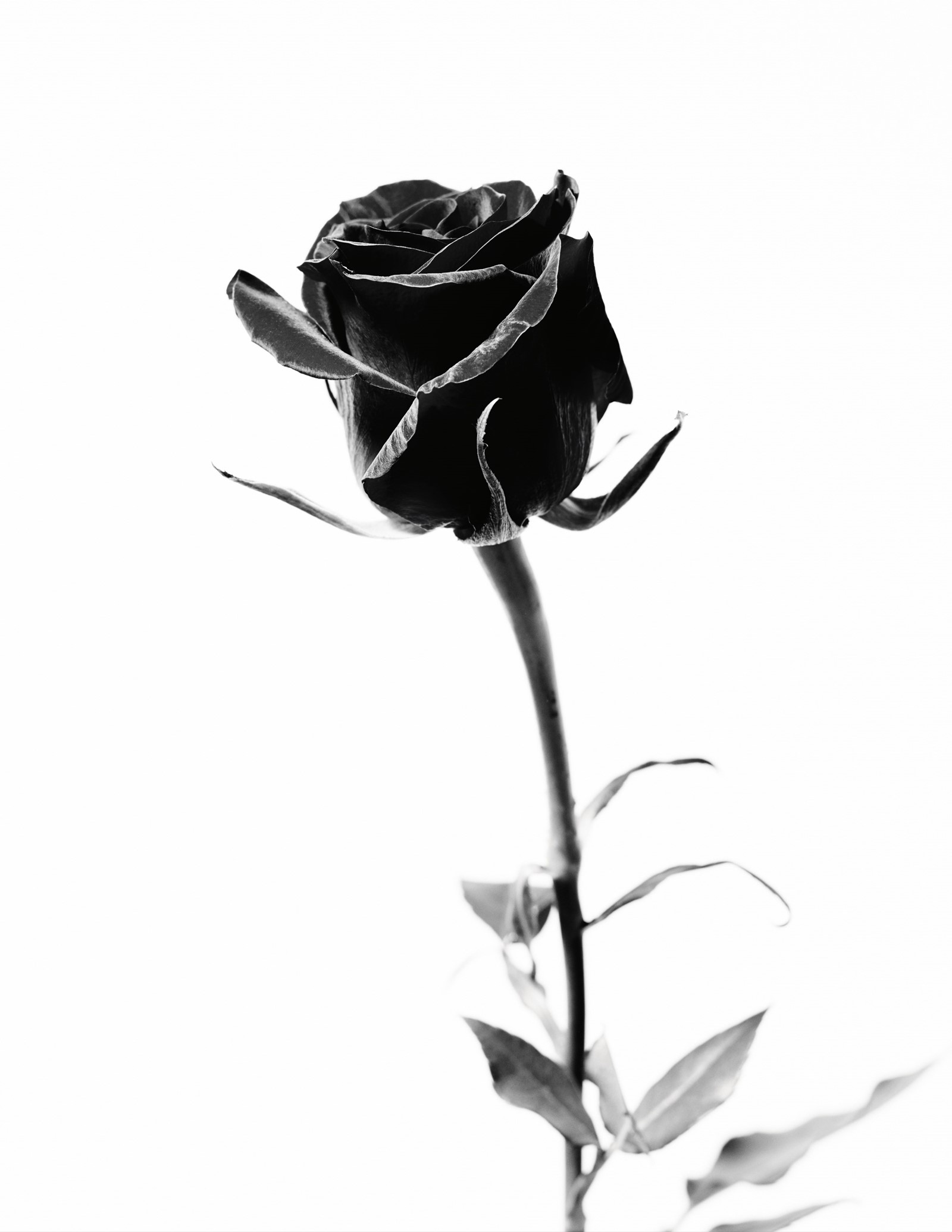
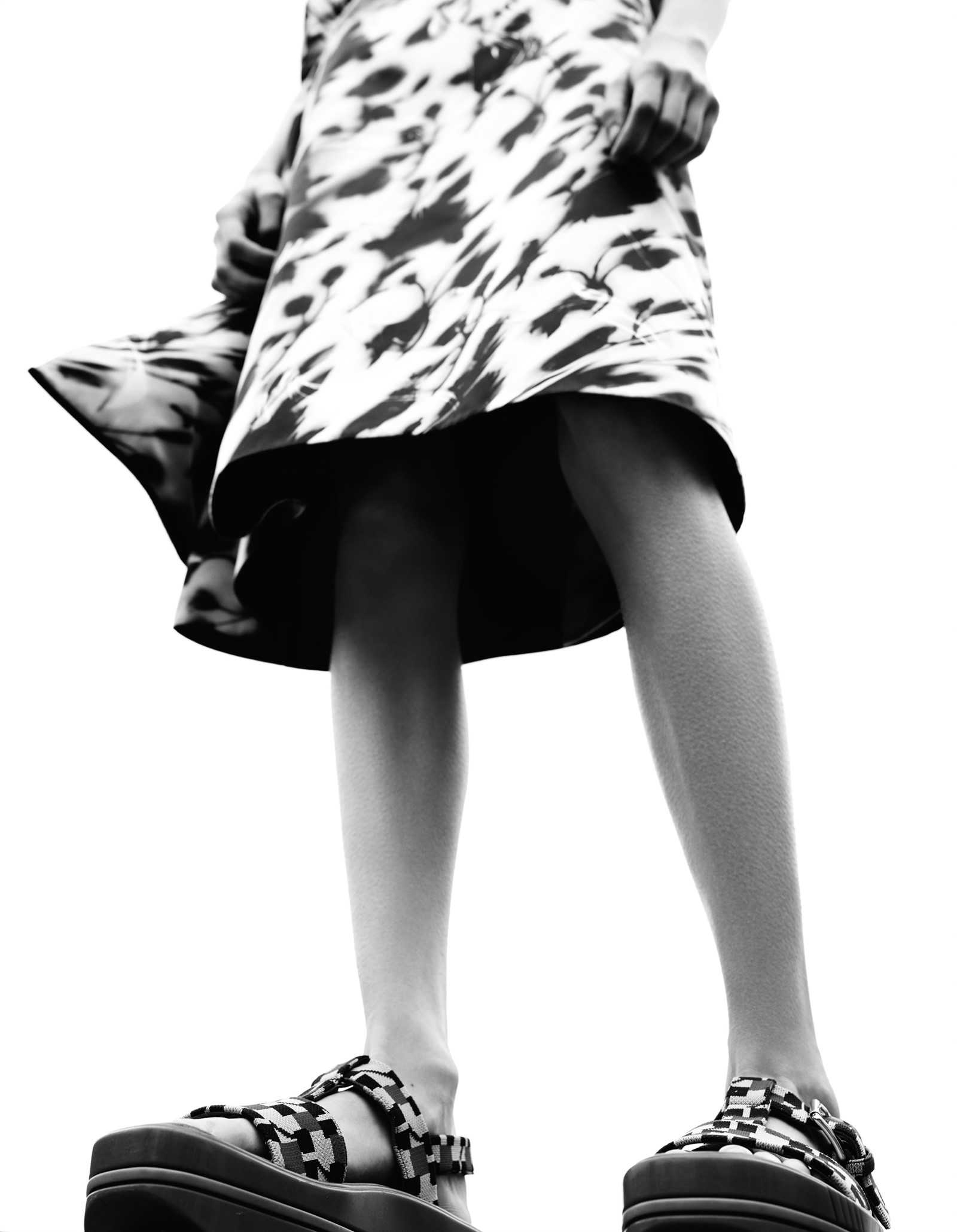
“A weakness of architecture and maybe also in fashion today is that they are only about beautiful things,” says Rem Koolhaas, the Dutch architect responsible for the design of Prada Epicentre stores, the show sets for both Prada women’s and men’s shows and for the Fondazione in Milan. “What I think is crucial in terms of understanding Prada is that there is always a dialectic between beauty and non-beauty, which gives it a depth. We try to reflect on that in our work for them. Working with Mrs Prada, she can be very determined, but she can also be very open to others. There is an ambition to do things in a different way. She has the courage to go against the obvious, against the expected, even against the commercial. All of that gives her an aura of independence.”
And it’s an aura of independence that her clothes bestow on to those who wear them. “Prada to me means a brand that intellectuals, creatives, visionaries and bon vivants feel comfortable clothed in,” says art consultant Shala Monroque. “What is special about Mrs Prada is that she is a woman with a very clear vision without much compromise and the language with which to communicate that vision masterfully. Once she believes in an idea she is behind it 200 per cent. I will never forget the first time I wore her bottle cap skirt because it transformed me into a different woman for the evening, brought out my playful and confident side. It’s the only way to handle a skirt like that in public. You can’t be shy and wear it. I remember seeing it a couple of years later at a store in Hong Kong. It’s the kind of clothing that’s more of an art piece, it remains on sale at some places years after it is produced at market price.”
“Prada is an institution, it’s institutional because it’s a huge brand. But it is also total anarchy, it has an anarchic approach to elegance and to fashion” Fabio Zambernardi
For his part, Zambernardi now oversees fashion, and all related product and image for Prada. And each season begins with a conversation between just himself and Miuccia Prada which, in true Milanese style, is carried out over lunch. “Yes, we have lunch together, we talk,” Zambernardi says. “It’s very much conversational at the beginning. Miuccia is not a designer who sits down and sketches. She never does that. She’s very visionary, very fast. Words are faster than sketches. Miuccia might be inspired by an emotion, a woman, something human, something very personal. So we start with a concept, which is the most important thing, and then try and make sense of it. We have a great team and they do that for us with a first prototype. Then you evolve that prototype, look into details and fabrics of course. When you get to the technicalities, you see the materials, then you can get obsessed with a stitch, but before that it’s all about the impression and that makes it more modern somehow. And that’s why we look at things designed here and they don’t always seem precise: it’s like that, but it’s not like that, that dress should look like that but not really be that. It’s all about an impression. Miuccia is an impressionist.”
It is a highly intuitive way of working. “It’s fun but she is also very demanding, not only of other people, but also of herself. She’s always doubting and it’s a lot about instinct. That’s why when we work we are all open, at ease, we talk. There’s always that sense of being on the edge of making sure that what you do makes sense. There’s a little bit of stress too, of course, because you have her as your point of reference and everybody wants to make sure that what they have to say is relevant to Prada.”
Above all, “Prada is an institution, it’s institutional because it’s a huge brand,” Zambernardi says. “But it is also total anarchy, it has an anarchic approach to elegance and to fashion. Miuccia to me is an anarchist but she’s conservative. The beauty of it is that you have to have that background to be free, to be anarchic, to be wrong. It makes everything believable.”
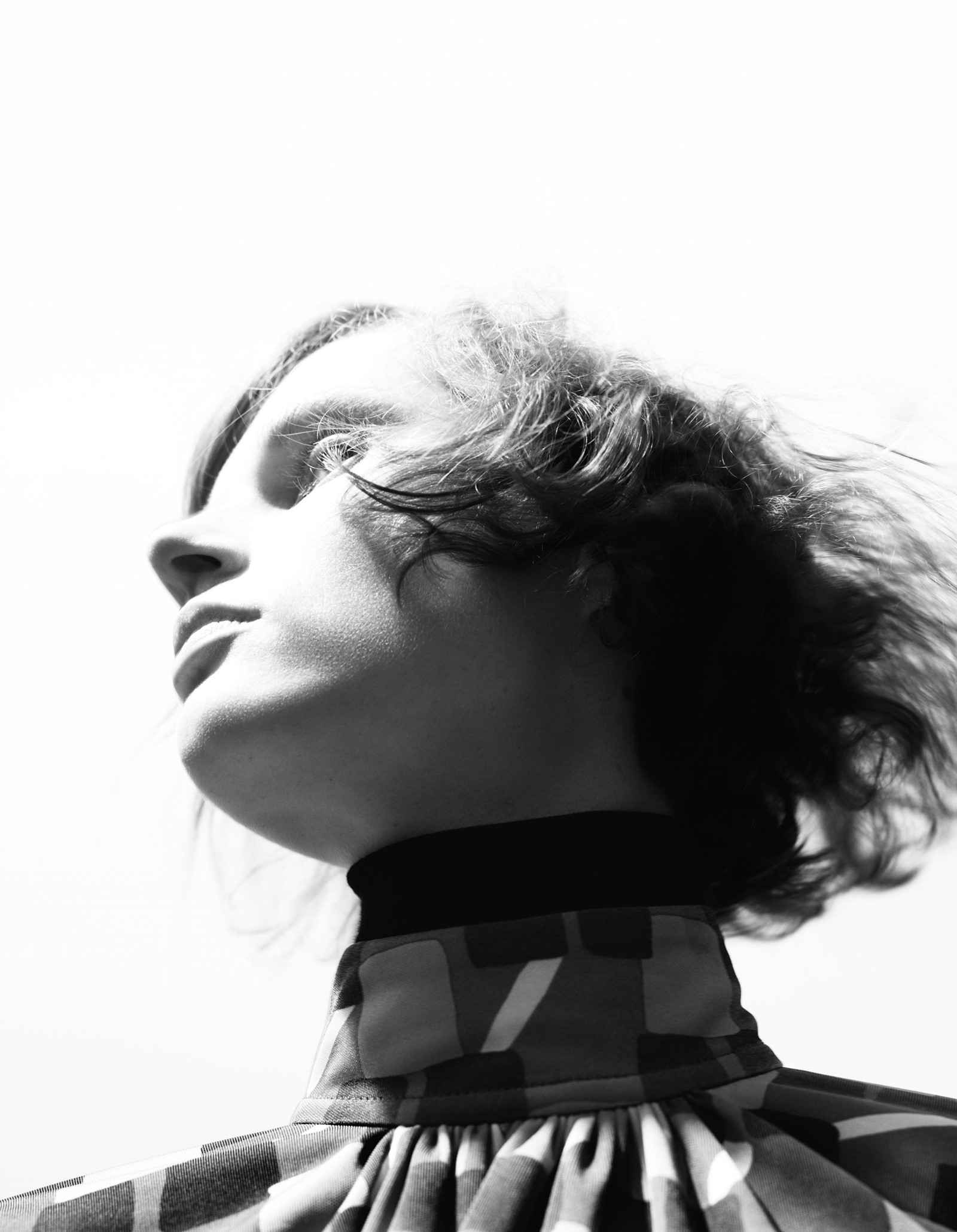
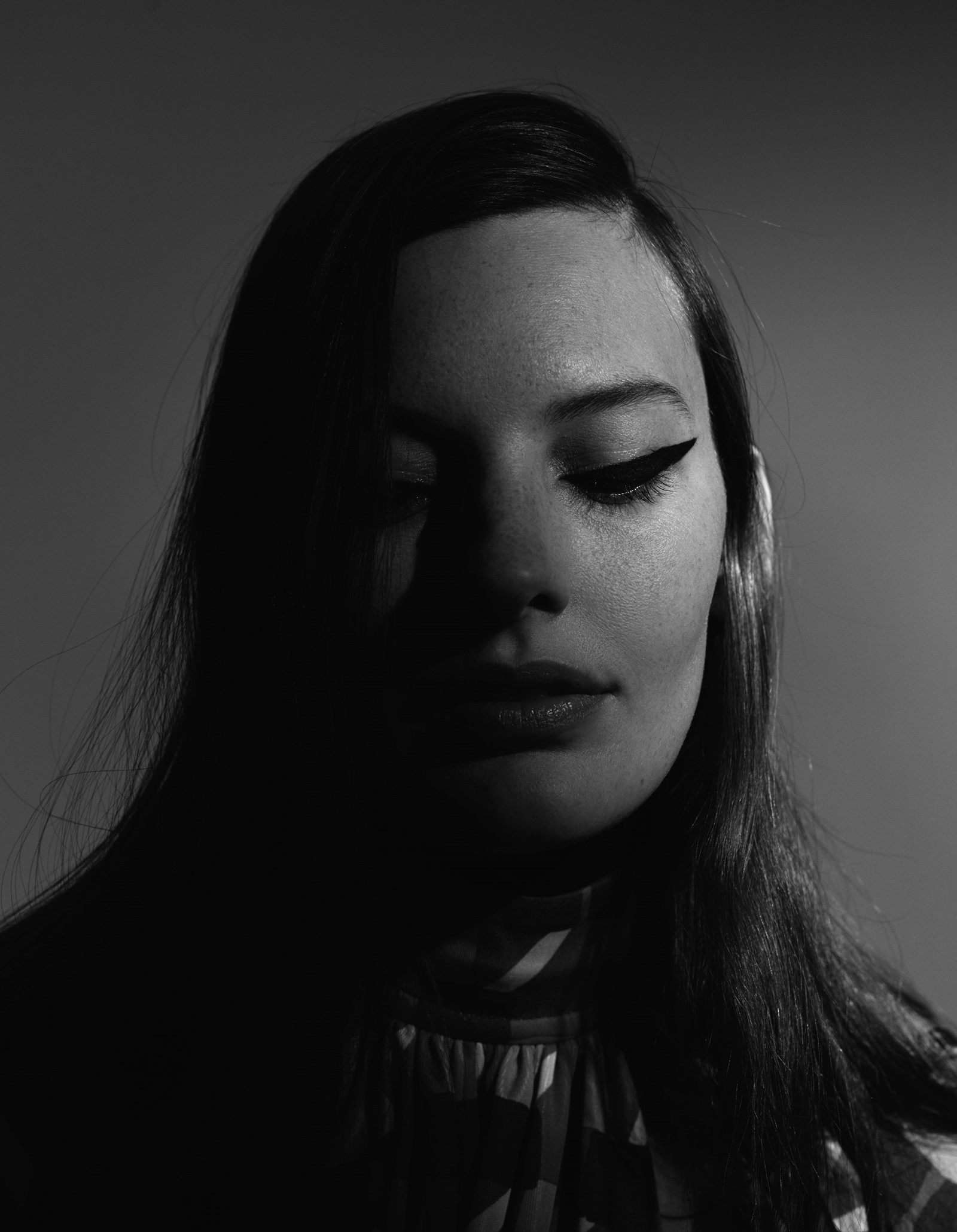
Miuccia Prada was born and grew up in Milan in the apartment she lives in to this day, although it has now been extended. Her father was a wealthy man in his own right, described by his daughter as eccentric, her mother, Luisa, ran the family luxury goods business, supplier of leather goods and glass, established in 1913 by her grandfather Mario. She has one brother and one sister. “I really have no memories,” she says. “It was just boring. Good. Actually normal. Everything was fine. But there was no excitement. My parents were never severe but they didn’t take care of me having fun. They were serious. I had to study.”
The Prada family was well off but not ostentatiously so, and Catholic. In 2004, for an interview in the Independent newspaper, she described to me the way her mother used to like her to dress. “Super traditional. Blue pleated skirts. Blue, red, beige.” Her mother wore more obviously fashionable clothes and haute couture as, on occasion did her daughter. “But nothing frivolous,” Prada said. The young Miuccia’s shoes were brown and flat. “I remember being mad about having a pair of pink shoes. I grew up envying pink shoes.” It is surely no coincidence that the Prada shoe archive boasts more than its fair share of shoes in those colours, often both in a single pair.
“I remember being mad about having a pair of pink shoes. I grew up envying pink shoes” Miuccia Prada
For Prada – who was called Miu Miu by those close to her after which she later named Prada’s sister line – the good times started when she was about 15. “Then I started really having fun,” she says. “I was out, out, out. I remember turning my skirt into a mini-skirt on the stairs before going to school and taking it down again before coming back.”
Still Prada’s taste was highly influenced by Luisa and her sister, she continues. “I had a great education from both of them,” she says. “I see maybe we are at home, we have maybe a tablecloth, kind of embroidered. It’s too difficult to explain but I recognise it all the time. They had very specific taste, that I inherited, which is why sometimes I push more but I’m pushing classic. Classic is a word that I use all the time. I’m not sure, but for me it probably means something that deeply makes sense.”
Also deeply embedded in memory is the creation of fragrance. “I think that Mrs Prada always has an intelligent relationship with references to the past,” says Daniela Andrier, perfumer for Givaudan, who has been creating fragrance with Miuccia Prada since 2003. “Her power to give birth to something never seen before with the poetic wisdom of déjà vu is what she has brought into my life.”
If Prada is, in her own words, very “democratic”, nothing is left to chance, and everything ultimately starts and finishes with her. The casting of both her womenswear and menswear shows is almost as hotly anticipated as the clothes. In particular the first model out for women’s shows is scrutinised, setting the bar for other designers and fashion editorials internationally for seasons to come. “Prada is one of my most challenging jobs but it’s equally among the most rewarding,” says casting director Ashley Brokaw.
“What’s so special about Mrs Prada is her ability to identify what is new, what looks different and exciting. I always marvel at how intuitive she is when it comes to casting and what she sees as ‘beautiful’. She recognises how quickly things change and fashion’s appetite for newness, and is brilliant at changing the context of how we see certain models. There have been so many memorable moments. Probably the most memorable was the first men’s show I worked on all with actors [Autumn/Winter 2012]. I will never forget the reaction of the audience. They were cheering throughout the whole show and by the time Gary Oldman walked on to close it people were screaming.”

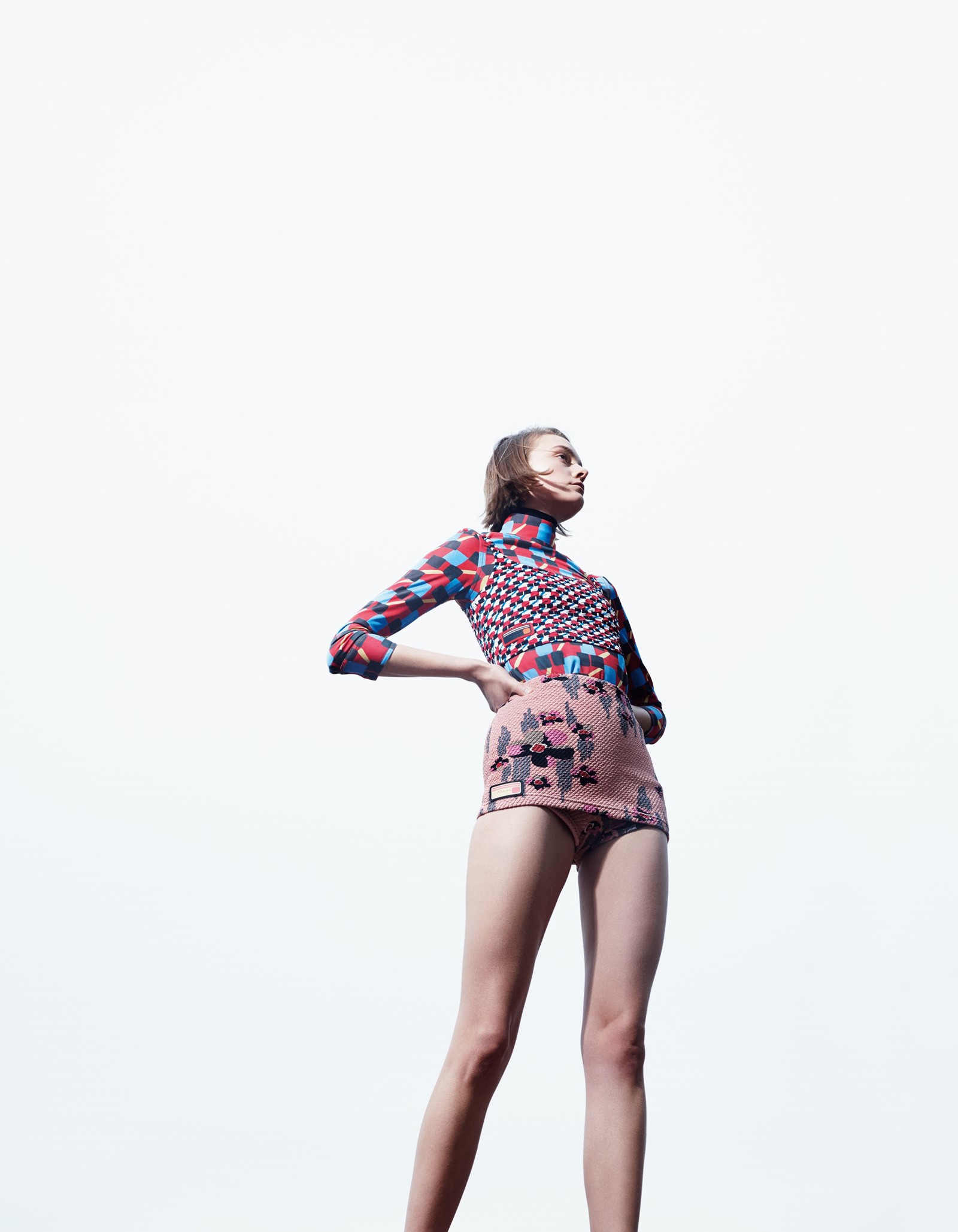
Guido Palau began styling the hair for Prada shows in the mid-90s and, following a break, of around five years, has done so again for the past 15. “The simplicity [of the Prada Spring/Summer 2017 show] feels new again,” he says. “Prada with the bobby pin in the hair. I’m sure she used to wear that when she was a young girl which, in its way, would have felt rebellious at that time.” He too finds working with Prada both challenging and inspiring.
“Because we’ve worked together in quite a tight way for so long – myself and Pat [McGrath, responsible for make-up] – there’s an understanding. We understand the way she likes to do things. She very much tells you the story of the collection, the set that’s been created which is always very important to her, and shows you some pieces of clothing. She’ll describe a woman. There’s always humour, romance, beauty and subversion. Then, myself and Pat have a discussion and come up with an idea. We bring maybe three, four or five girls into the design studio and present them to her. She looks and then reacts and then the way we both like to work is to think and curate in front of her. If we have the base right, whatever that is, we start to create.”
“I think aesthetics are really a very important part of my life. And so beauty, objects, places, I like them instinctively” Miuccia Prada
Prada graduated from La Statale in Milan with a doctorate in political science in 1970. “I barely put a foot in that university,” she says now. “I only went to school to take my exams. I studied maybe 10 to 15 days before the exam, the minimum effort needed to pass it. I had to take a degree for my parents so I chose the easiest possible one. I always passed. I don’t even know how. The only good thing I did was my thesis. That was really good. It was about the school, the Communist Party and the Unione Donne Italiane which I was part of. I studied for that with interest.”
That Prada was enrolled in the Communist Party is not so surprising given the political upheavals of the 70s. Fashion mythology decrees that she went to rallies dressed from head-to-toe in Yves Saint Laurent, and she has referenced his designs perhaps more than those of any other designer. “Back then, I really loved it,” she remembers. “I used to wear Saint Laurent all the time. I always liked the bourgeoisie. I was intrigued by the bourgeoisie. But mainly that was the culture of the 60s and 70s, Antonioni, Godard, Buñuel. Now it’s a subject that’s not so relevant anymore. We have such vast things in front of us. You have to choose your own path because there is so much to think about.”
If academia was never likely to be her chosen world, she was passionate about theatre. She studied mime at the highly respected Piccolo Teatro under director Giorgio Strehler. “It was strange, an exciting, strange place and they taught me a lot. Mainly I think I learnt an incredible discipline. That’s why, I think, I can be strong. If I have to work late, if I have to go on and on, I say, okay, you have to do it, you have to go more deep. I think I can do that because I learnt to there.”
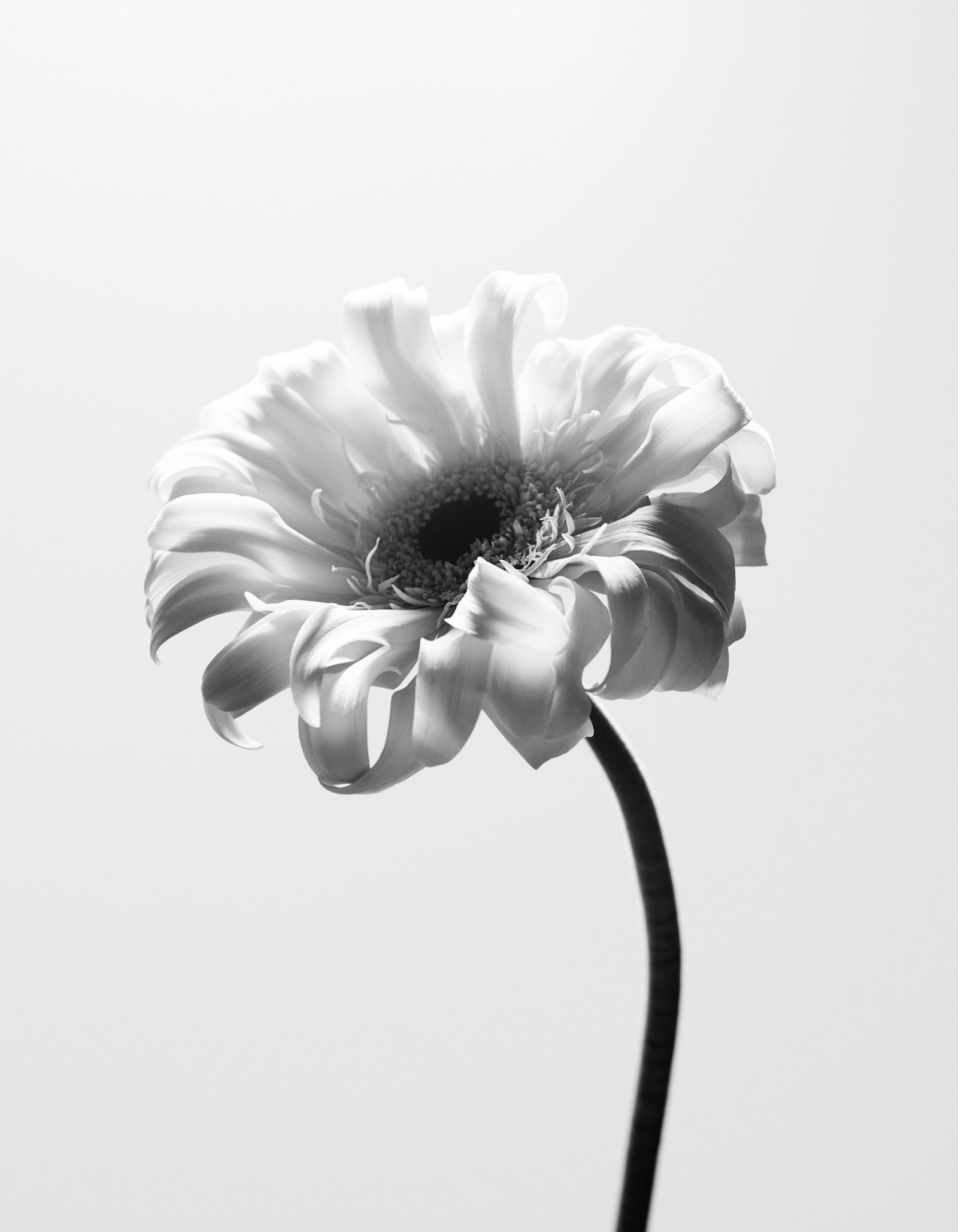
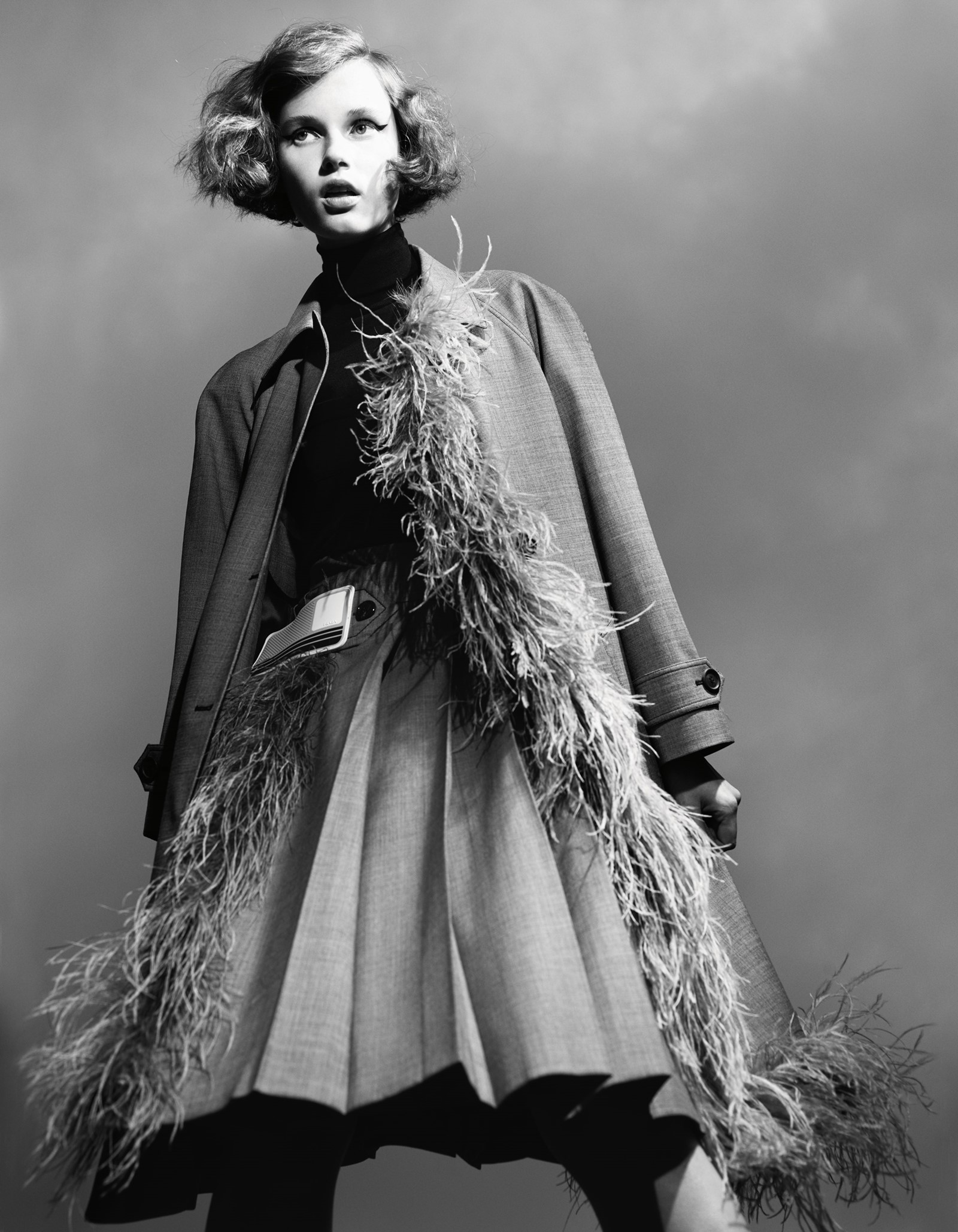
Prada entered the family business in the mid-70s. “It was my choice to give up theatre,” she says, “because I started doing this, working in fashion, for my mother. Theatre, politics and fashion were my three interests. But in the end, I met my husband and there was no decision to make. We just went for it. We started working together.”
They met in 1978 and married nine years later. They have two sons, now in their twenties. It was with Bertelli that the Prada nylon backpack was conceived in 1984, then, five years later, they decided between them to move into ready-to-wear. “Back then, if I hadn’t met him, I probably wouldn’t have done this job,” says Prada. “I would have done something else. I realised how interesting it was. You can travel the world, you can build things, you can learn things.”
It is often the case in fashion that the creative head of a brand works in tandem with a more businessminded partner. It is only very rare that the two are wife and husband. “We work separately and not,” Prada says of her professional relationship with Bertelli. “We always argue about stupid things. We can discuss the most stupid things for hours. He can do what he wants. I can do what I want. But on all the serious subjects in life, in morality, in behaviour, we always agree. That’s why we’re still together, in life and also in work. The main direction, we share.”
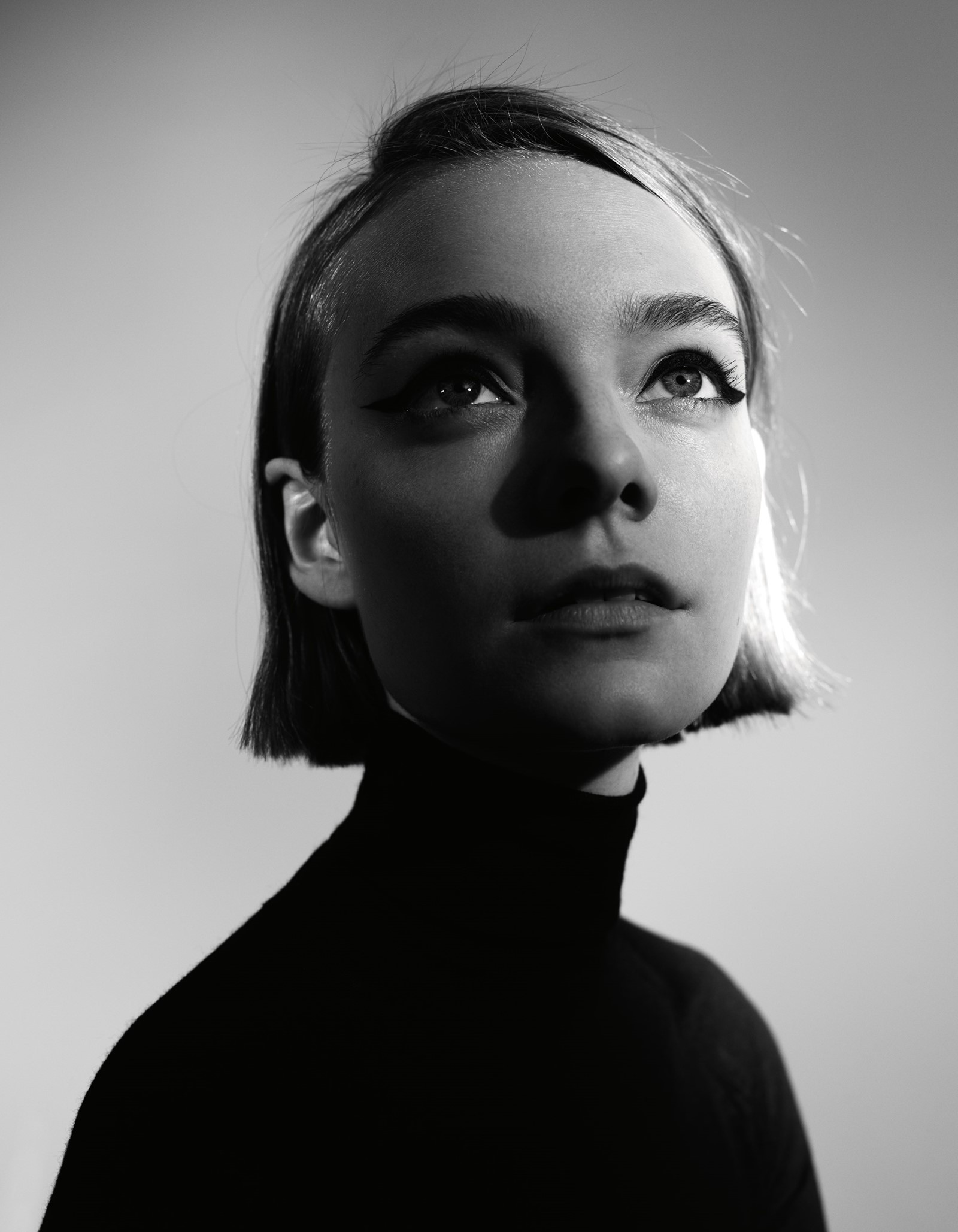
“Miuccia is an extraordinarily creative woman but with her feet firmly on the ground,” her husband of almost 30 years says by return. “Her work is specific and detailed with precise cultural references, not purely revolving around aesthetics. We share the same objectives, although we sometimes have a different vision of how to achieve them. But the starting point – a close analysis of society, its trends and how culture is evolving – and the final target are the same.”
While aesthetics may not tell the whole story they are clearly important to Bertelli and, even more so, to Prada. “I think aesthetics are really a very important part of my life. And so beauty, objects, places, I like them instinctively,” she says. “Out of everything, that is one of the most important things about me. So you care about going to the sea and searching for a good beach or maybe you want possibly at home to have a nice carpet, a nice table that you feel comfortable sitting at, or a big garden, or a small garden, a little flower. It’s the same with clothes, they’re part of the aesthetic of your life.”
When asked whether or not she considers herself an autobiographical designer she wonders: “My personal history? Maybe not. Maybe,” thereby throwing the hapless journalist off course entirely. “But for sure my ideas. Because it’s me talking and of course I talk about what I care about. I think what counts in life are the same for all of us: fear, love, death, sickness, joy, childhood, friendship, probably hate, that is upsetting, I don’t feel it so much. These are the things that have moved humanity forever, these are the things that really count.”
Hair Duffy at Streeters; Make-up Lynsey Alexander at Streeters for Estée Lauder; Models Amanda Murphy at IMG, Giedre Dukauskaite at Women Management, Natalie Westling at The Society Management, Nimue Smit at The Lions NY; Digital operator Henri Coutant at DTouch Paris; Lighting technician Romain Dubus; Photographic assistant Pavel Woznicki; Styling assistants Niccolo Torelli, Eugenia Gamero, Jose Miguel Dao; Hair assistants Ryan Mitchell, Erin Herschleb; Make-up assistants Camila Fernadez, Andrew Colvin; Manicure Megumi Yamamoto at Susan Price NYC; Production Production Lab; On-set producer Simon Malivindi; Special thanks to Stéphane Virlogeux.
This article originally appears in AnOther Magazine S/S17.
